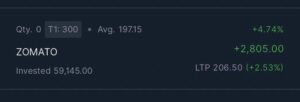A renowned trading company named Bernstein has published a thorough analysis outlining the cost to generate 1 BTC for the top Bitcoin miners. This research offers important insights into the present situation and prospects for these miners, as the mining industry had a difficult start to 2023 as a result of a severe market decline the previous year.
According to the study, the 16 biggest mining companies with publicly traded stock account for 16% of all Bitcoin that is mined. With forecasts indicating an estimated 182% rise in capacity over the next 2-3 years, these companies are already operating at a significant mining capacity of 72 exahashes per second (EH/s).
Larger miners with low production costs and little debt are positioned to be the main winners of this capacity growth, according to Bernstein’s analysts, led by Gautam Chhugani. They are in a strong position because of their capacity to withstand extreme volatility and price increases, particularly in light of the impending Bitcoin halving anticipated for April 2024.
The research notes that 15 of the aforementioned Bitcoin miners have projected production costs around $15,000 per BTC, with Bitcoin’s current value hovering around $29,000.
The possibility of a Bitcoin exchange-traded fund (ETF) being approved could be a saving grace for these miners. According to Bernstein’s study, such clearance might result in greater institutional engagement, which would boost market momentum. Considering that lower production costs would put miners in a favorable position, this might then give them enough “margin room” to better manage the effects of the 2024 halving.
One significant finding in the study is that three of the aforementioned miners have debt-to-equity ratios that are higher than 1, which may limit their capacity to tolerate falling Bitcoin prices. The cryptocurrency is strategically held in the financial portfolios of four well-known Bitcoin mining companies, including Riot (RIOT), Marathon Digital (MARA), Hut 8 (HUT), and Hive Digital (HIVE). With this strategy, they can hold off on selling until prices are more favorable, which could lead to greater realized gains from the BTC they have taken.
In conclusion, Bernstein’s analysis offers insightful information on how much it costs top Bitcoin miners to produce 1 BTC. It highlights how crucial low production costs, little debt, and effective financial management are to equipping these miners to deal with the opportunities and challenges presented by the rapidly changing crypto market.





